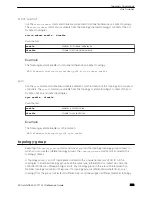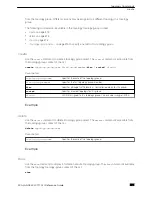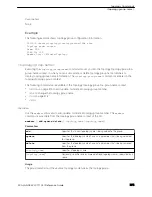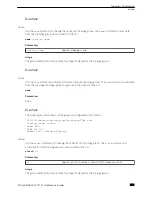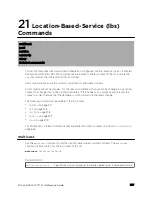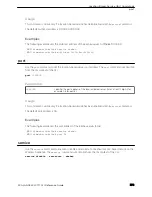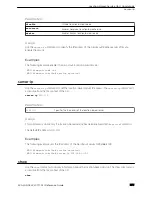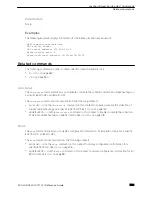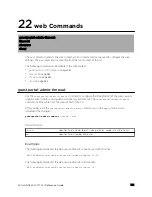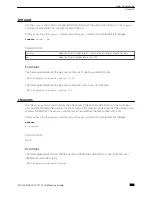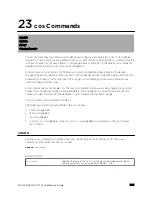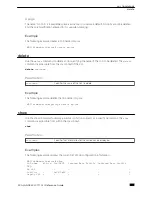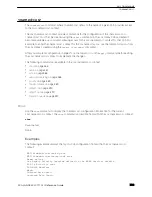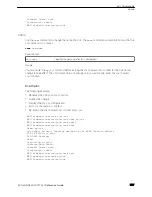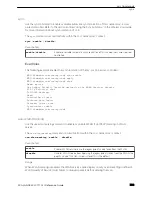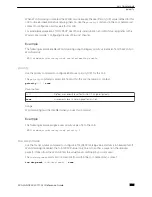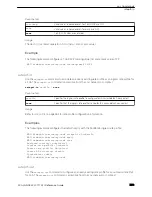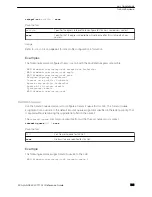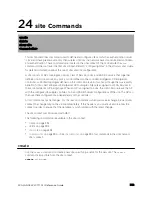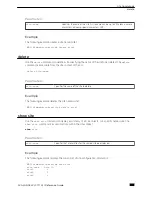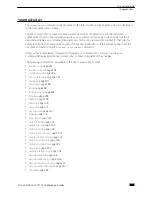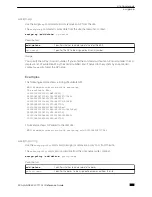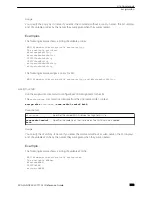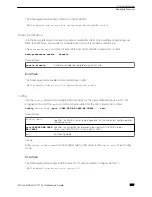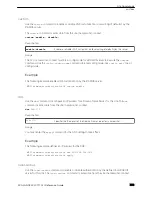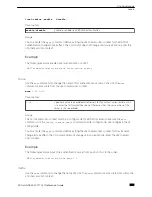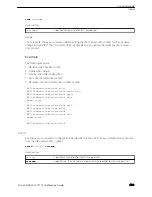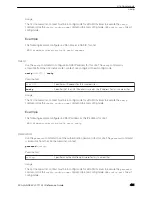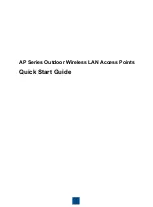
<named-cos>
The
<named-cos>
command, where <named-cos> refers to the name of a given CoS, provides access
to the cos:<named-cos> context.
The cos:<named-cos> context provides commands for the configuration of the <named-cos>. A
<named-cos> must first be created using the
create
command in the cos context. Once created it
becomes available as a command, allowing access to the cos:<named-cos> context for that CoS. For
example, to enter the <named-cos> context for the cos named my-cos, use the command my-cos from
the cos context, created using the
create <cos-name>
command.
After you complete configuration changes for a <named-cos>, run the
apply
command before exiting
the cos:<named-cos> context to implement the changes.
The following commands are available in the cos:<named-cos> context.
•
on page 386
•
•
on page 388
•
on page 388
•
•
•
•
•
on page 391
show
Use the
show
command to display the <named-cos> configuration information for the current
cos:<named-cos> context. The
show
command is accessible from within the cos:<named-cos> context.
show
Parameters
None.
Examples
The following example displays the my-cos CoS configuration from within the cos:<named-cos>
context:
WLC.siemens.com
:cos# my-cos
WLC.siemens.com
:cos:my-cos# show
Name: my-cos
Use Legacy Priority Override defined in the WLAN Service: disable
802.1p Priority: none
ToS/DSCP Marking:
Mask:
Inbound Rate Limit:
Outbound Rate Limit:
cos Commands
<named-cos>
SCALANCE WLC711 CLI Reference Guide
386
Summary of Contents for scalance WLC711
Page 1: ...SCALANCE WLC711 CLI Reference Guide Release V9 21 14 C79000 G8976 C261 07 Published July 2015 ...
Page 21: ...dns 2 192 1 2 3 dns 3 192 1 3 3 Common Commands show SCALANCE WLC711 CLI Reference Guide 21 ...
Page 376: ...Example topology Commands vlanid SCALANCE WLC711 CLI Reference Guide 376 ...

